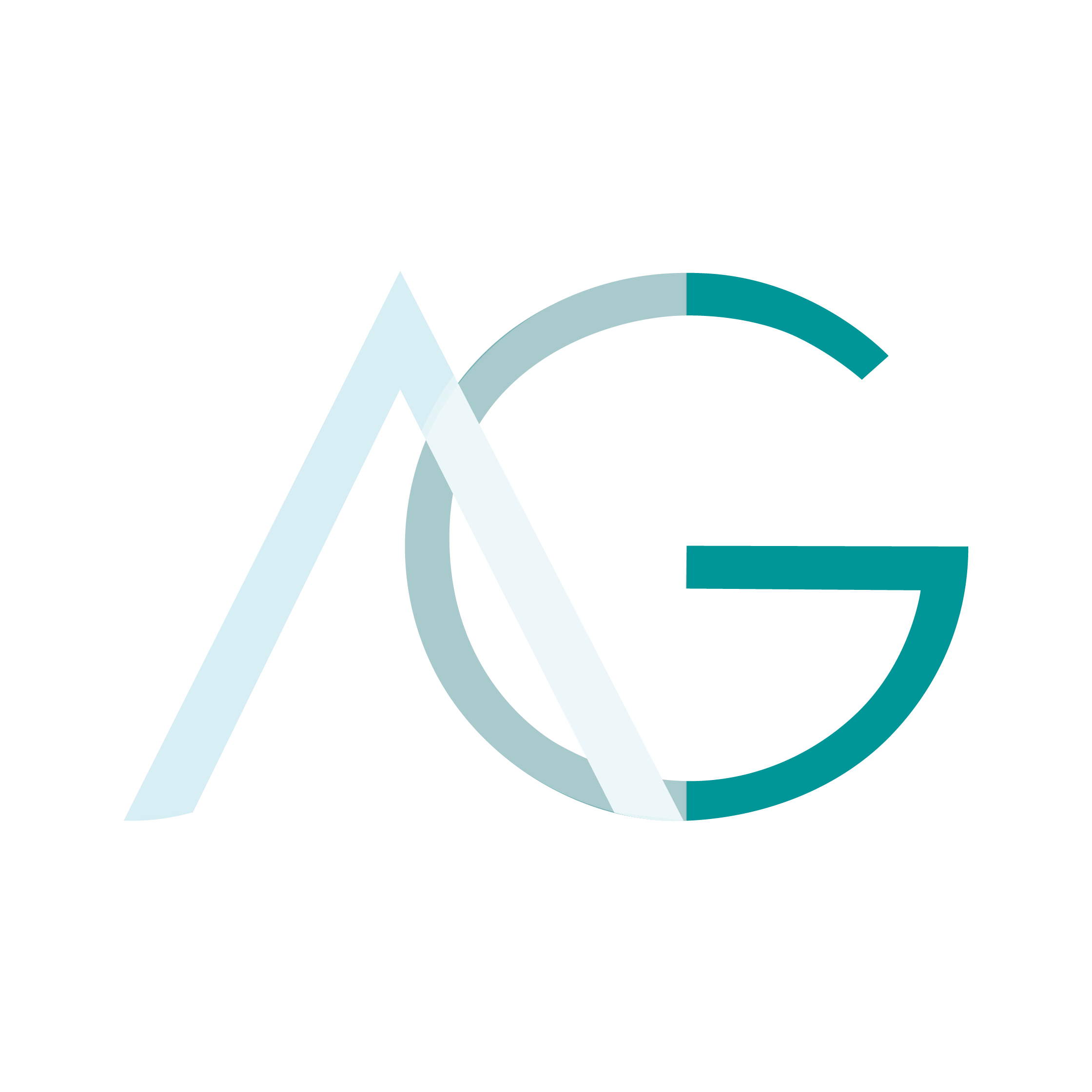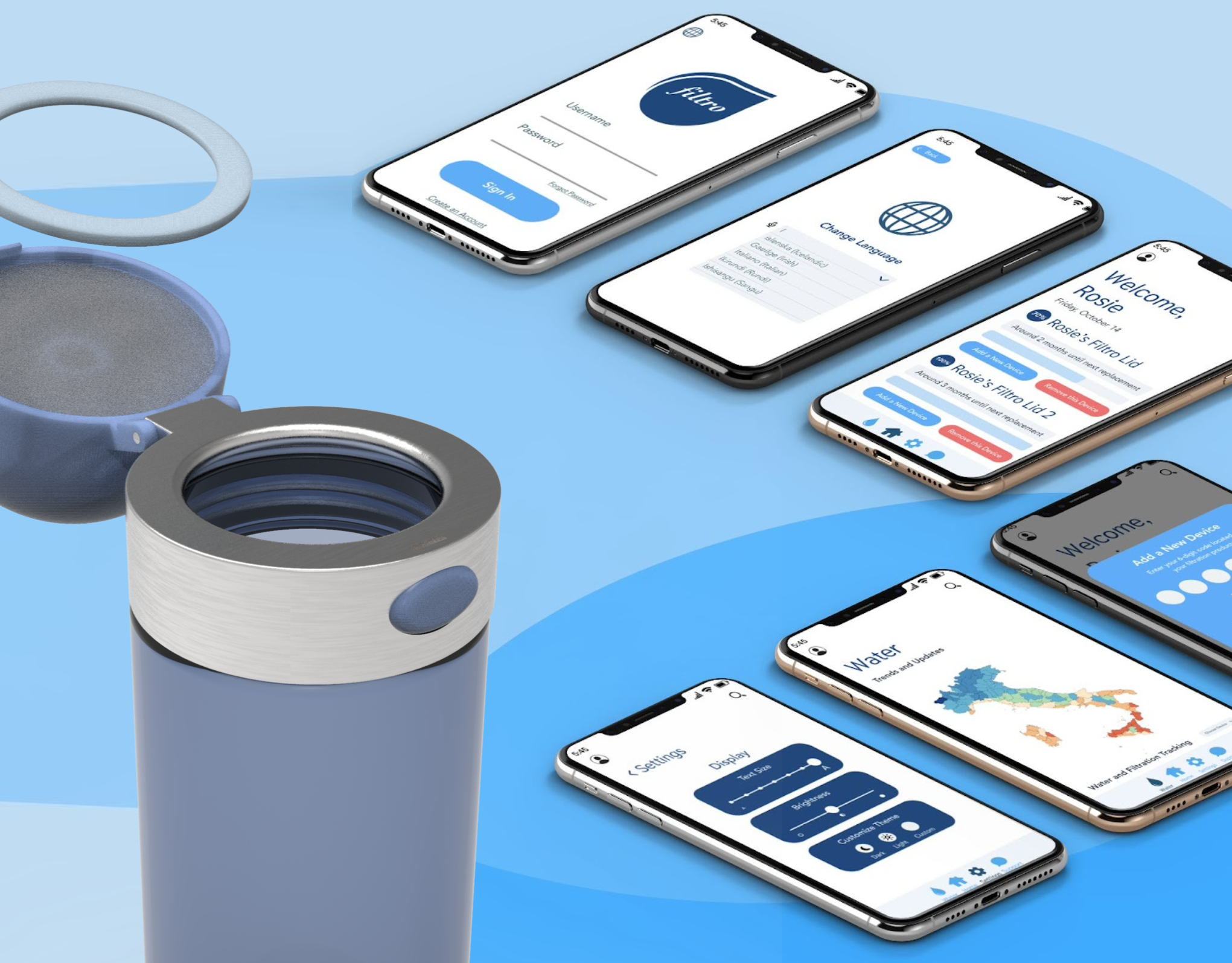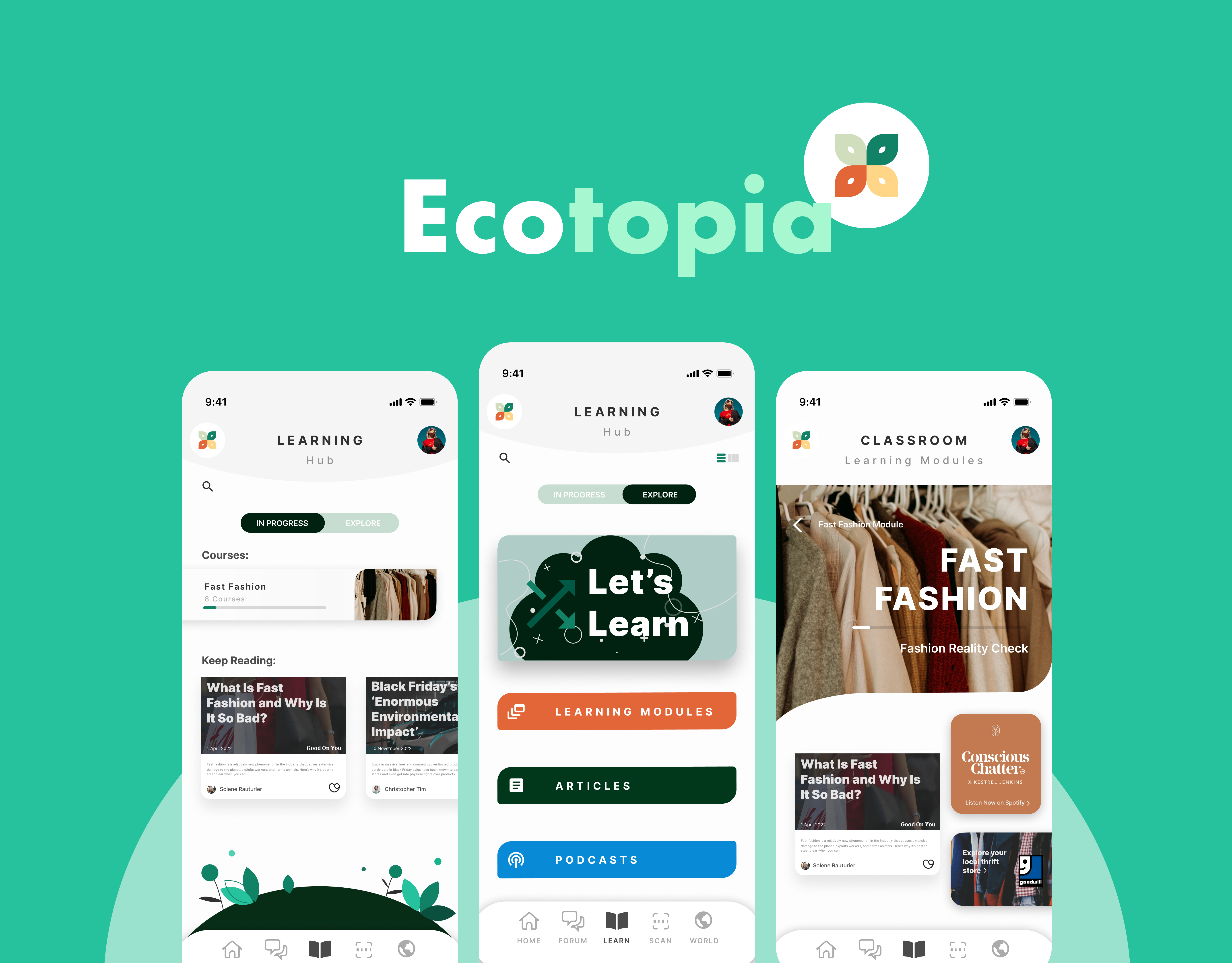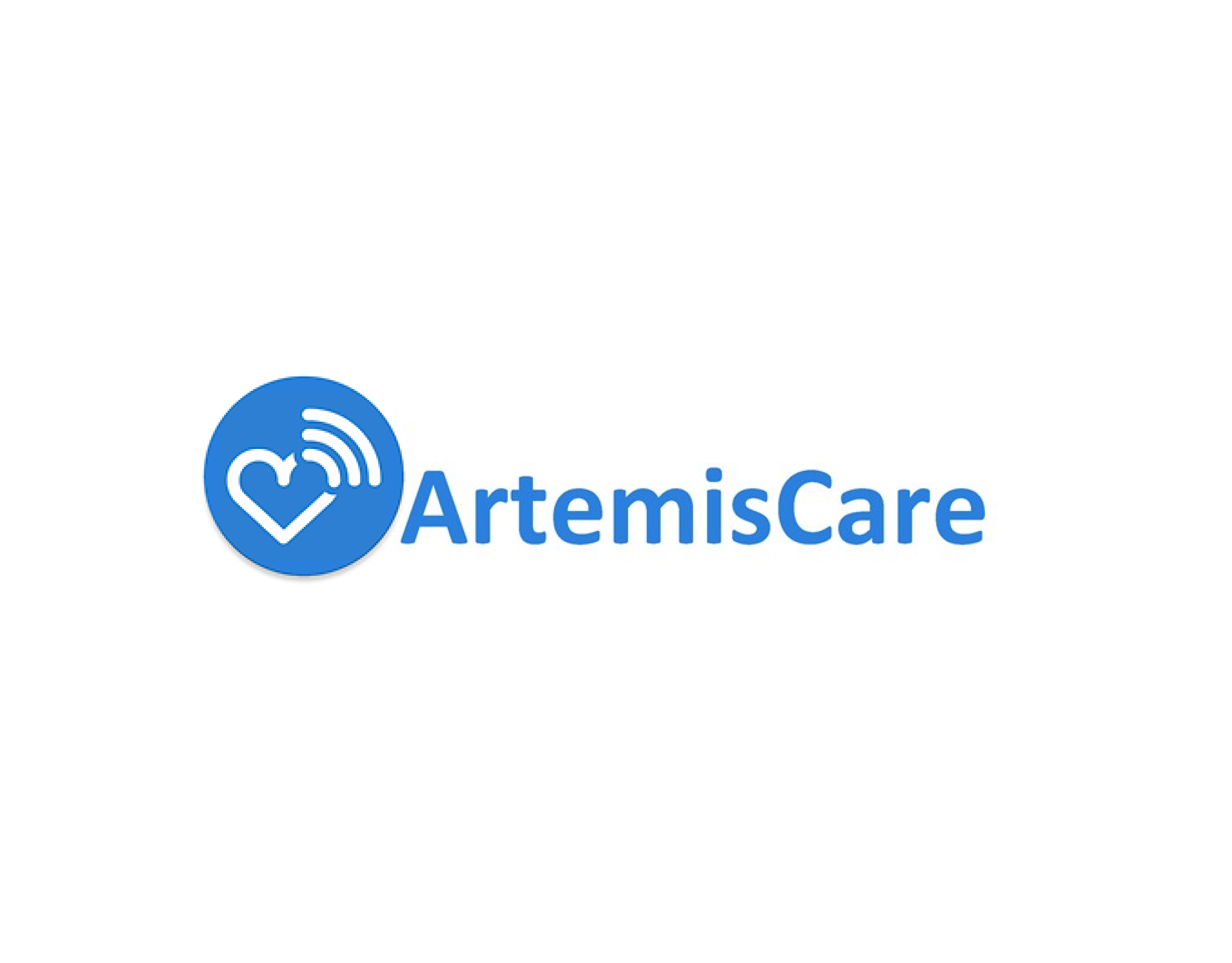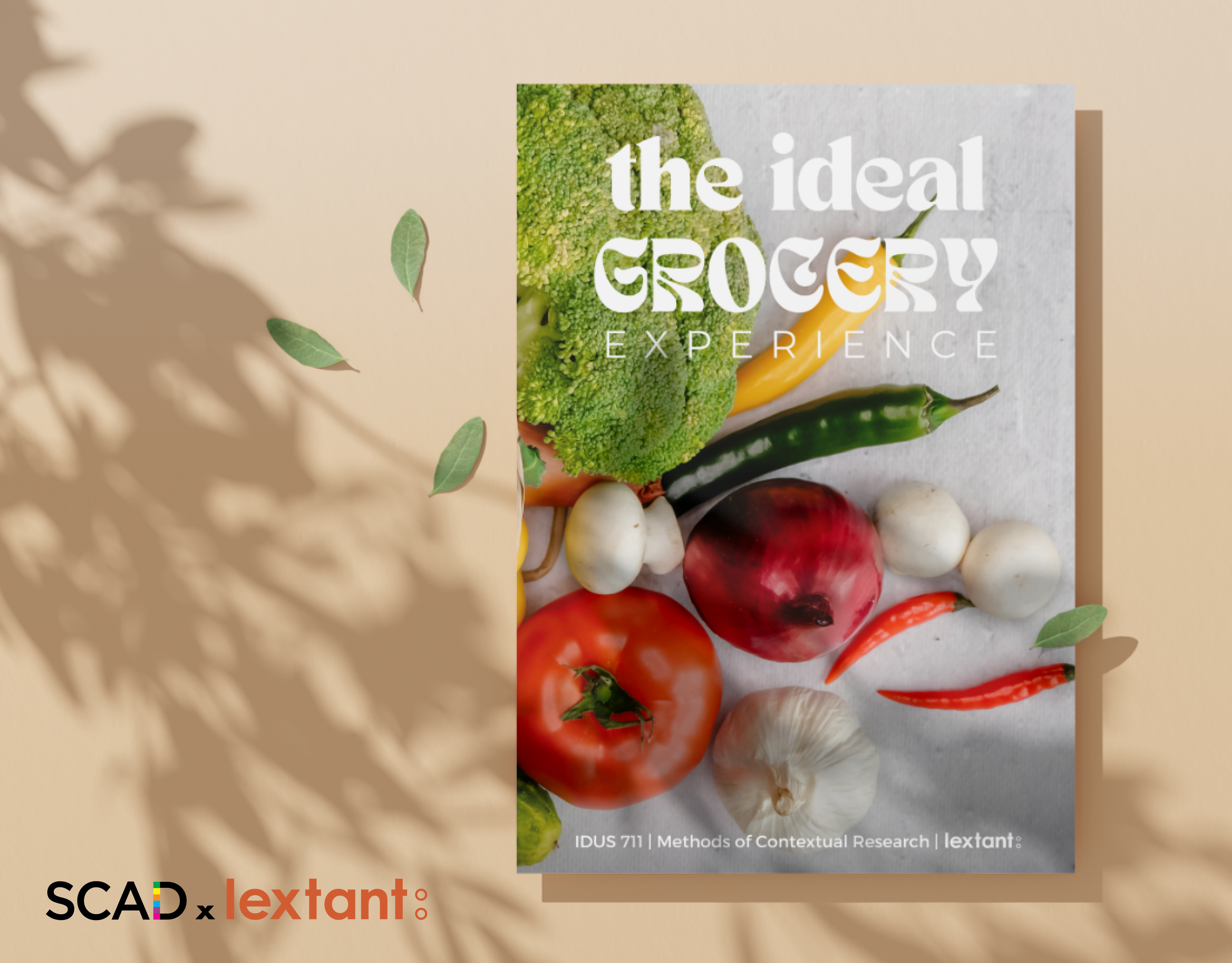OVERVIEW
Overview
Product
An app-based mental health service providing customized self-care plans and interactions with animals for college students.
This aims to help students cope with any stress tied to college life and reduce the costs of on-campus mental health services provided by universities.
Duration
10 weeks
Responsibilities
Design Strategy
Contextual Research
Competitor Analyses
Defining User Groups
Interviews/Surveys
Affinity Mapping
Archetypes
Business Modeling
Prototyping
Brand Development
Pitch/Market an MVP
Communicate Value Proposition
My Role(s)
Project Manager
UX Researcher
UI Designer
Team
Amy Varghese (DMGT)
Melbourne Palmer (DMGT)
Brianna Goebel (Service Design)
Mentored by Gabriella Campagna Lanning (UX @ Google)
PROBLEM
Over 80% of college students experience stress, anxiety and depression.
As a college student, I myself have experienced stress within busy academic and social environments. A key memory from finals week was seeing therapy dogs in the library I studied in.
Animal therapy has been a growing field, and proven to reduce stress, but this sparked the question of how to increase access to this fun & friendly form of mental wellness care for college students?
(National Library of Medicine, 2020)
THE SOLUTION
University Partnership
•Easily access animals on campus through wellness events
•Use university's single-sign-on to join for free
•Eliminate skepticism in service by seeing uni. affiliation + badge verification
Attend Events
•Access group events to alleviate stress and anxiety
•Complete badges + group training event to unlock solo's
•Filter events based on schedule
Book Solo Sessions
•Spend 1:1 time with animals, forming genuine bond
•Schedule + book custom stress-release activities
•Fulfill a mutually-beneficial relationship by socializing animals
Manage Self-Care
•Track + manage mental wellness activity in one spot
•Explore personalized self-care resources developed by certified therapists
•Benefit from multimodal logging options, choose what works best for you
Click images below to view each feature in-depth:
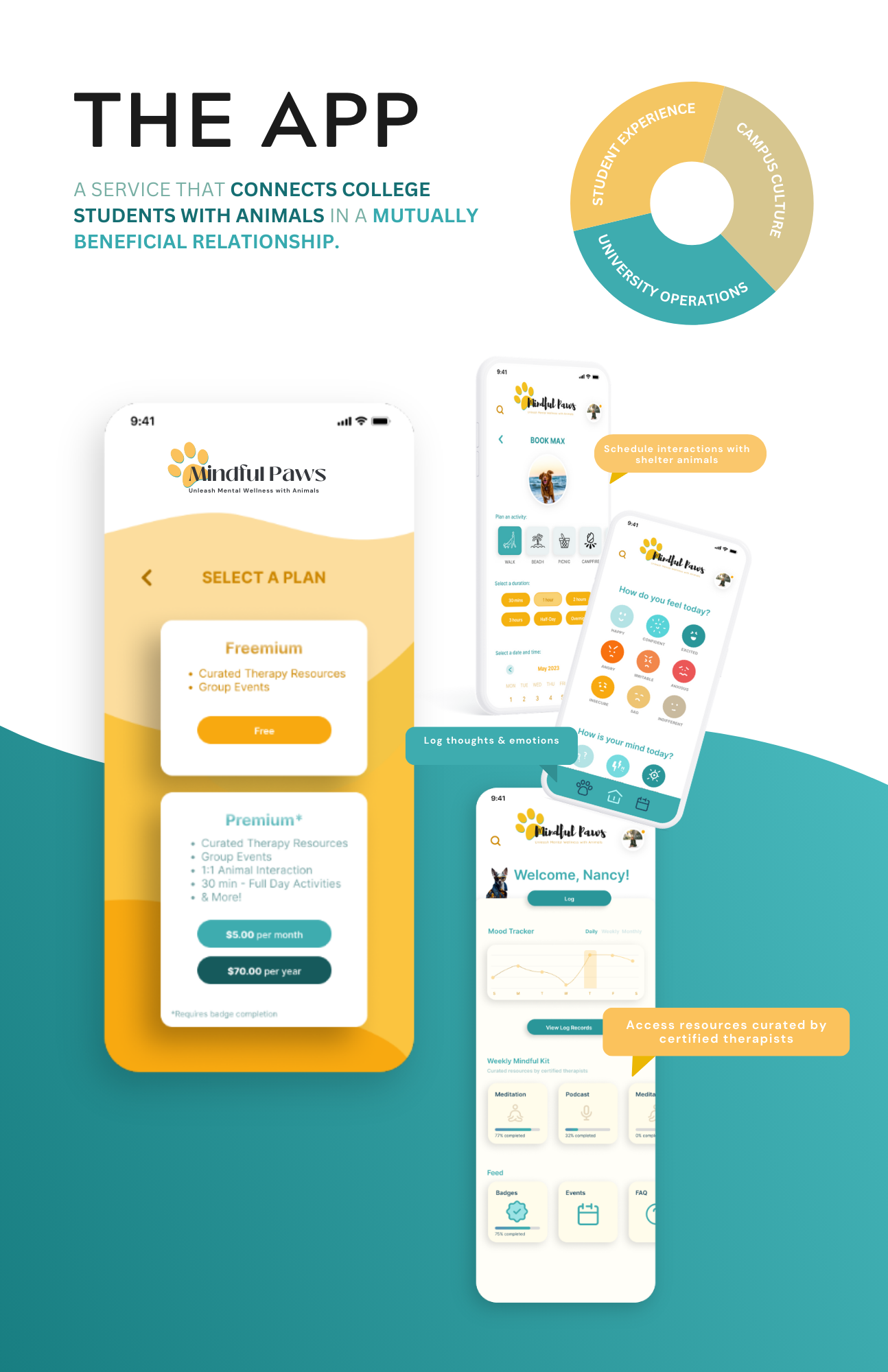
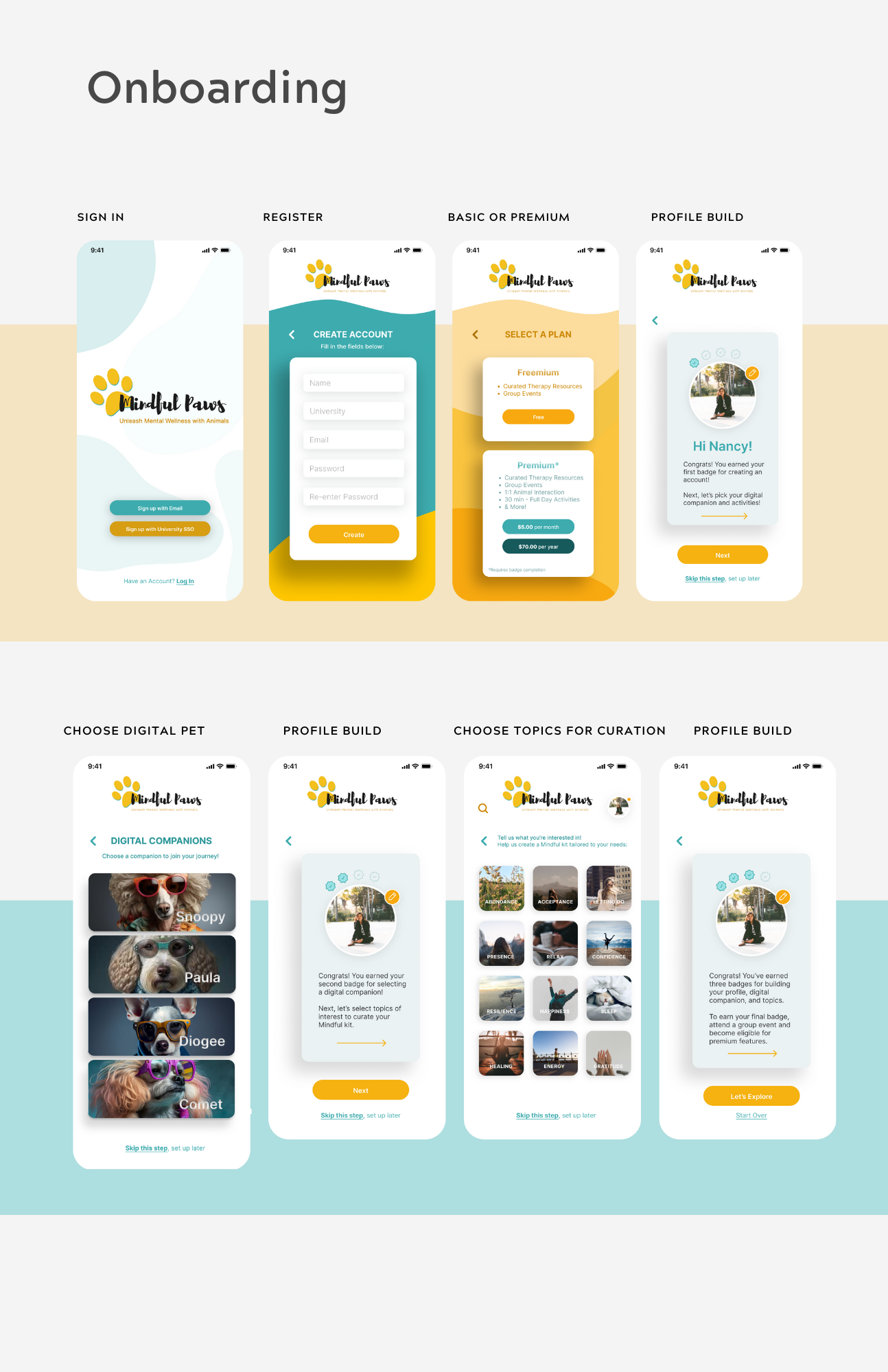
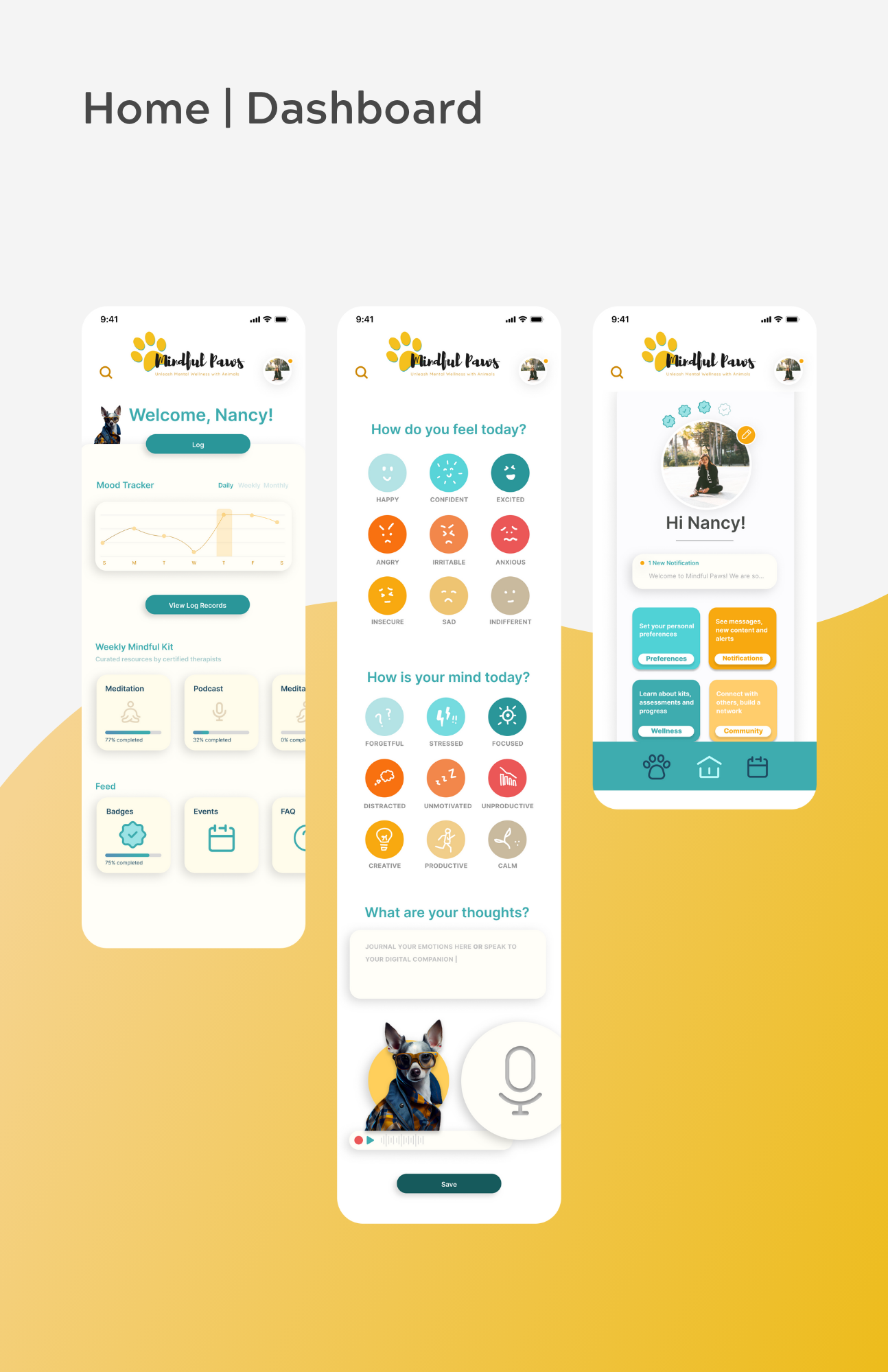
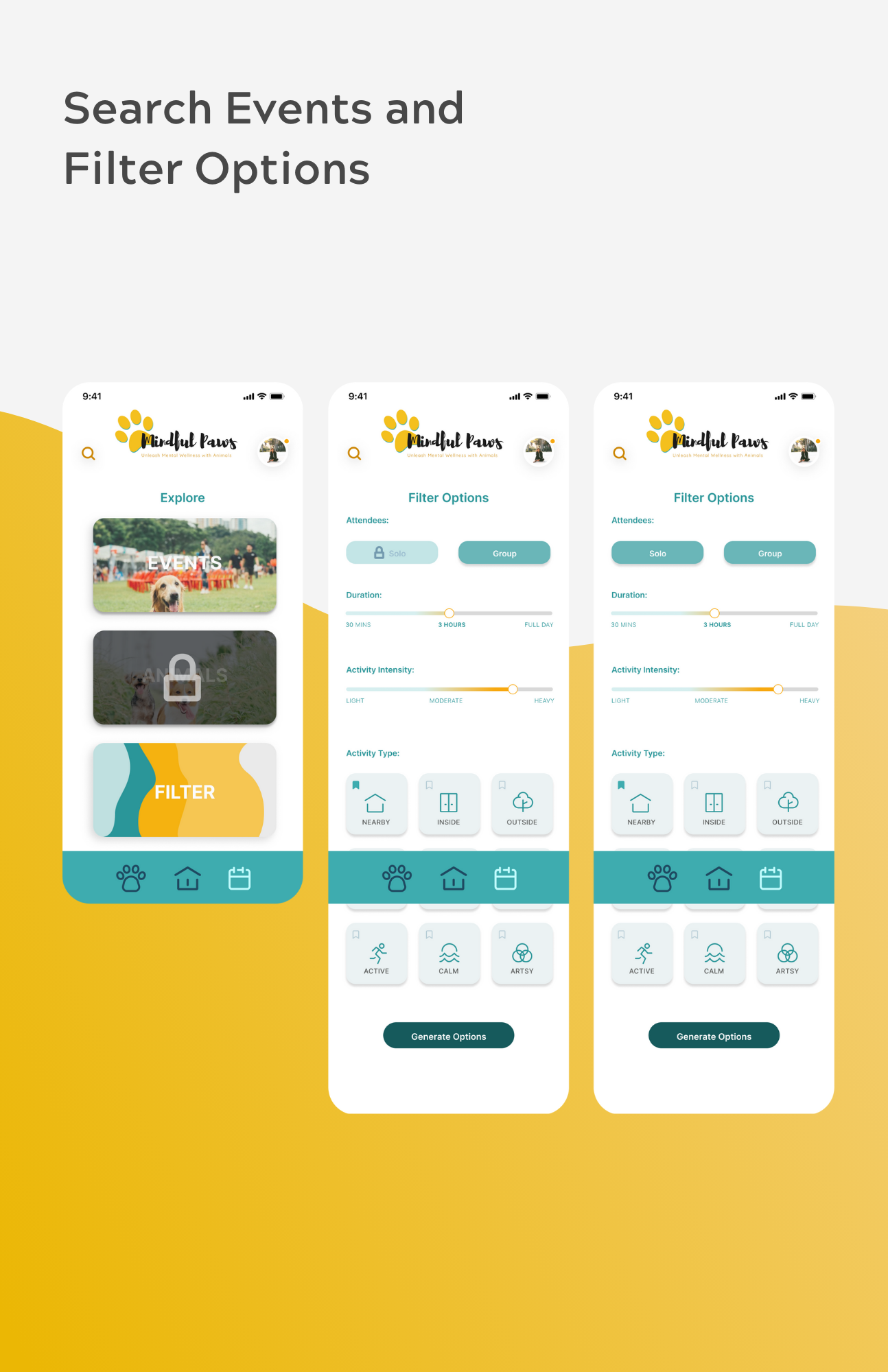
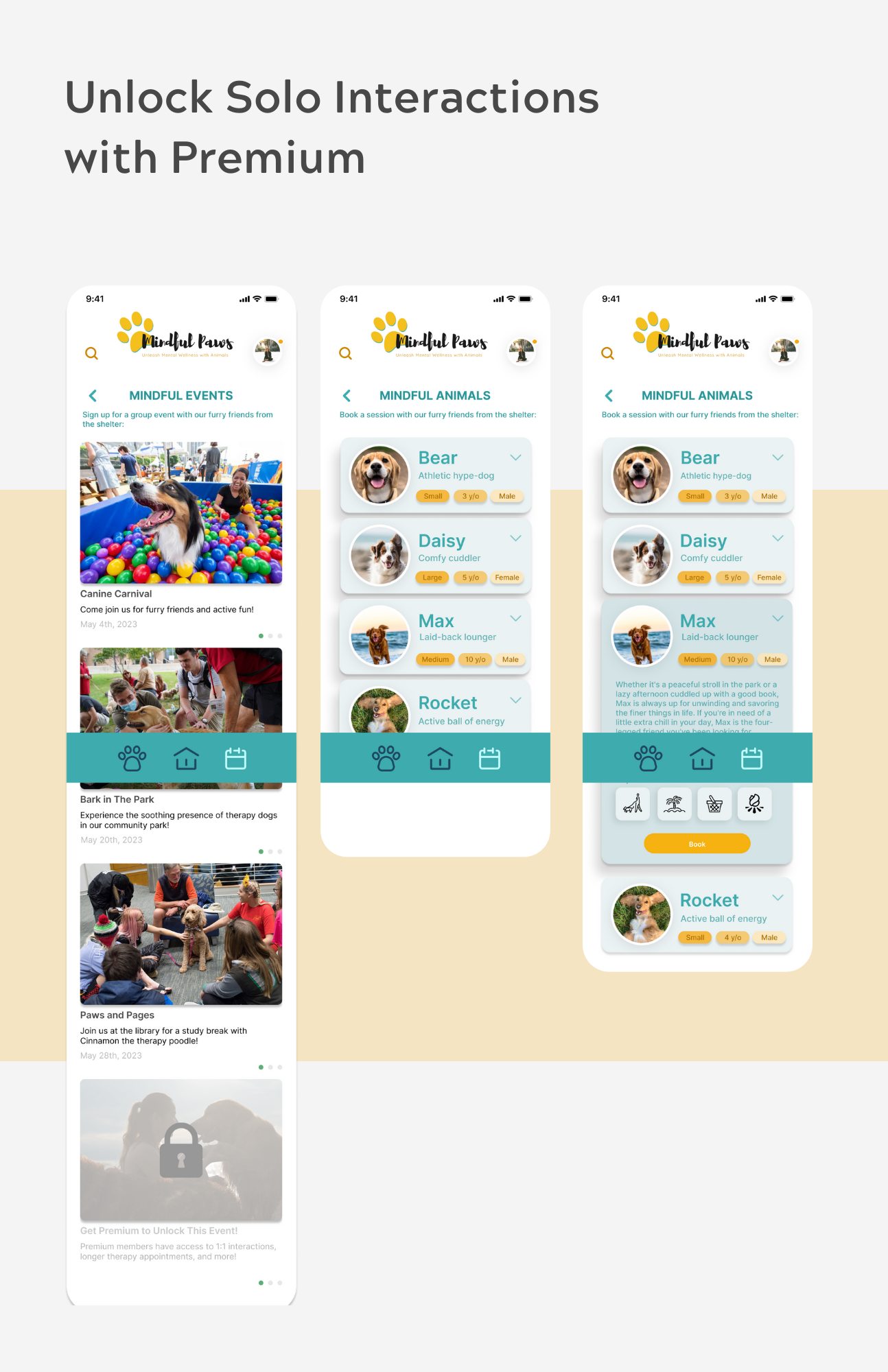
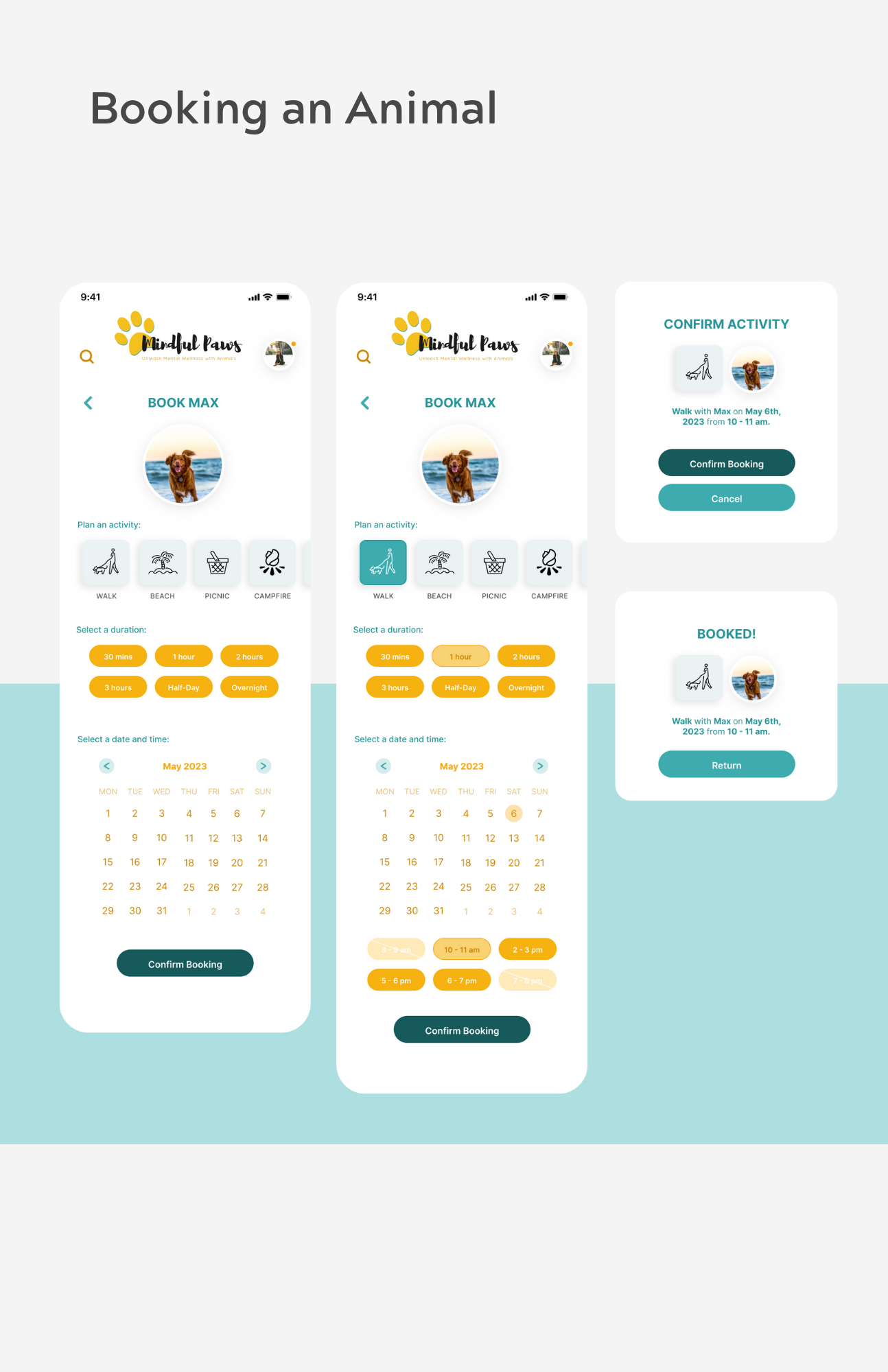
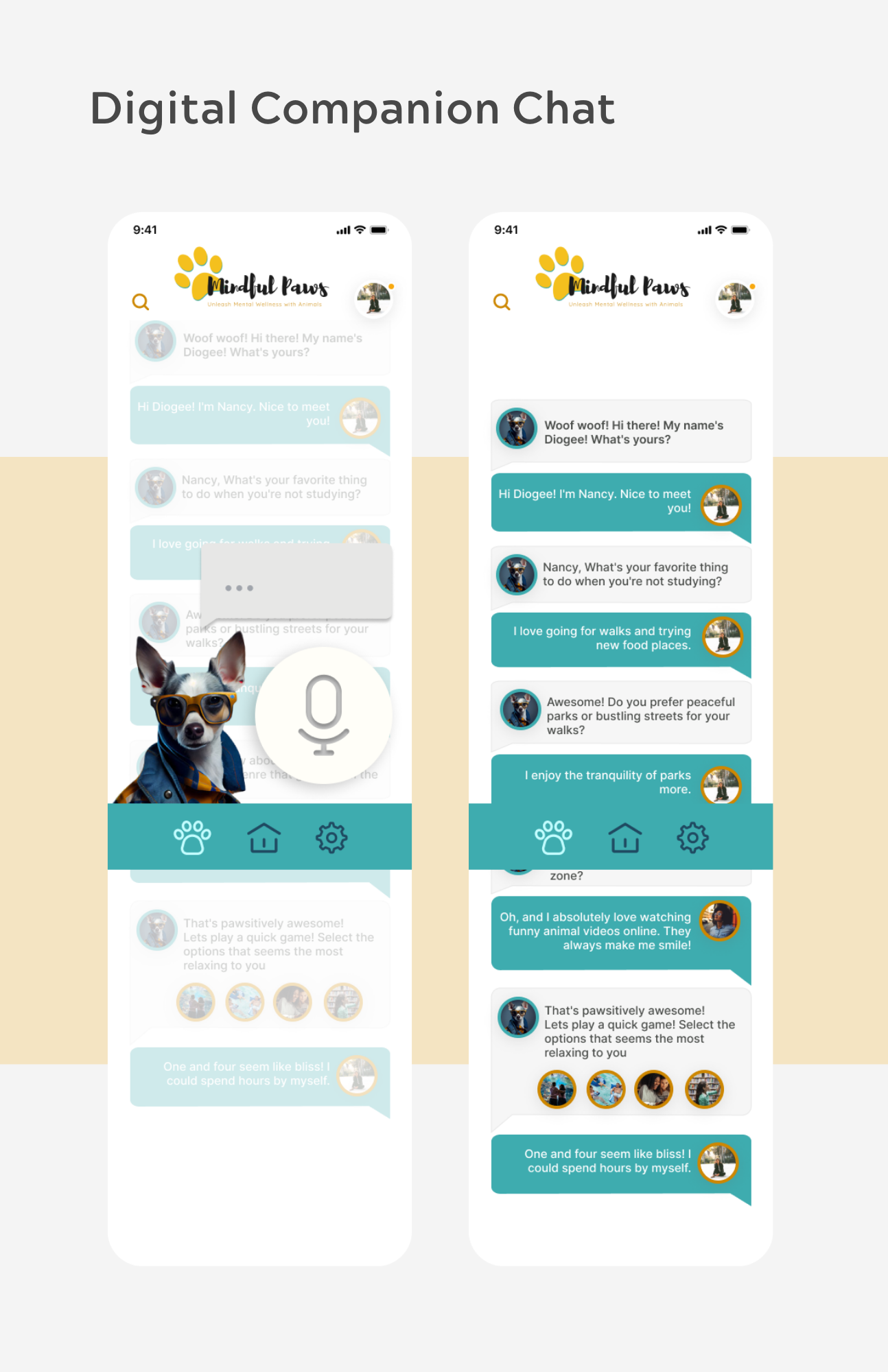
Next Steps (If I had more time)
1. More Iterations: Since this was a design management academic project, there was more focus on process/insight-generation than testing the usability of our final product. The actual prototype went from concept to completion over 2 weeks, so I'd do more validation testing on UI choices and fine-tune flows.
2. Edge Cases: Users can run into unexpected situations with a product, and it's important to factor unusual conditions into the usability instead of risking assumptions. I'd explore and develop edge cases, for example if a student doesn't follow through with a scheduled interaction / becomes an inactive member / training practices have changed and demands badge renewal to stay eligible for premium activity access.
Key Takeaways
1. Proactive Communication + Time Management: Our team worked across 3 time zones with quick deadlines over 10 weeks of collaboration. To be successful, it was imperative for us to frequently message updates, document progress on Miro, schedule weekly huddles, + use a Kanban board and daily agendas to accomplish our tasks.
2. Prioritize Insight Generation: In order to drive decision-making and provide rationale, it is valuable to not only do extensive research, but translate findings into clear-cut insights + themes for thorough understanding of the problem space and user needs. Having a clear direction for what you are trying to improve helps the ultimate design solution bring meaningful value.
